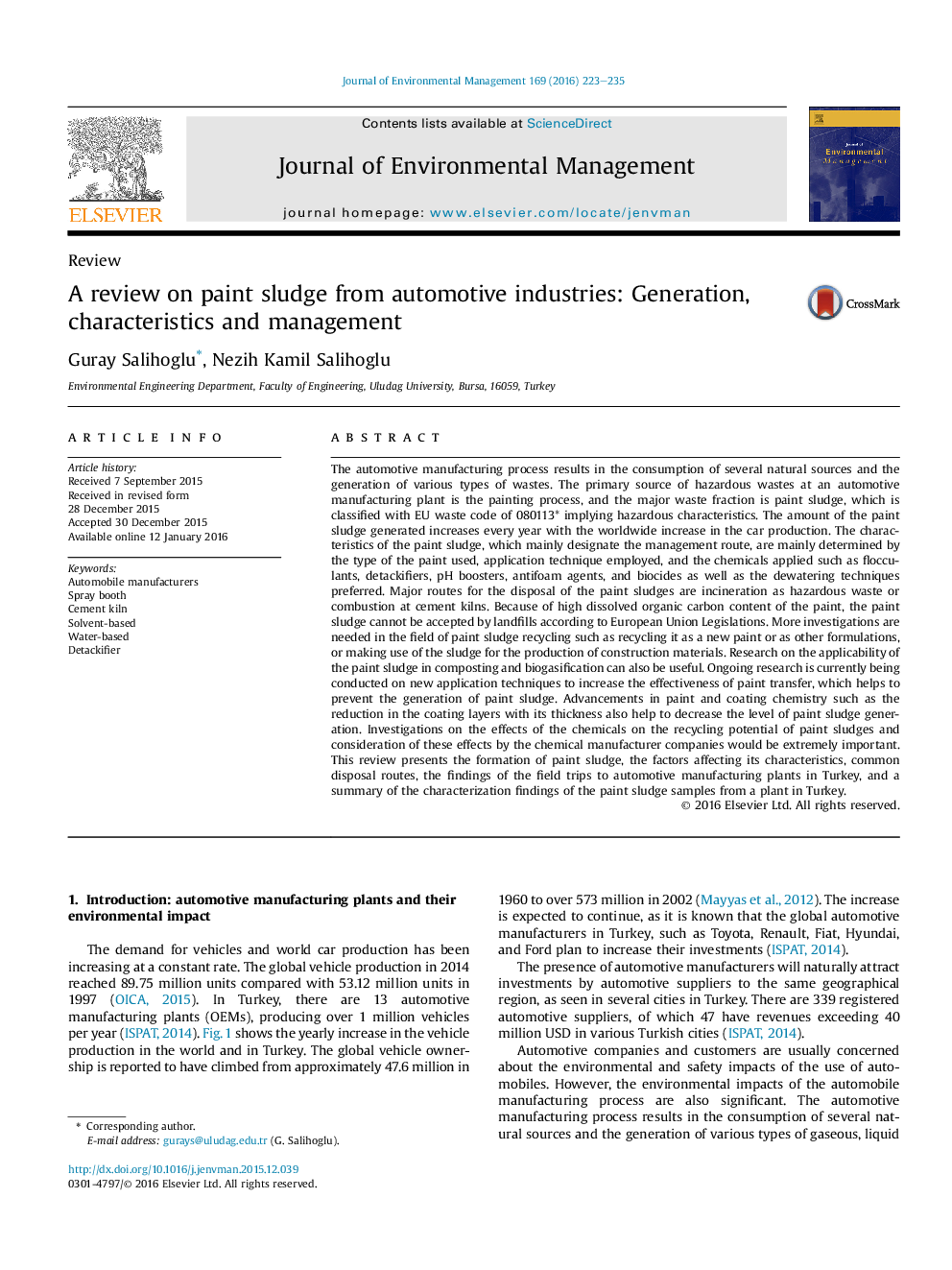| کد مقاله | کد نشریه | سال انتشار | مقاله انگلیسی | نسخه تمام متن |
|---|---|---|---|---|
| 1055453 | 1485243 | 2016 | 13 صفحه PDF | دانلود رایگان |
• Paint sludge constitutes a major fraction of the hazardous waste from automotive industry.
• Major disposal routes are incineration or combustion at cement kilns.
• Limited number of studies has been reported on paint sludge recycling.
• Chemicals such as flocculants, detackifiers affect the characteristics of the paint sludge.
• Consideration of these effects by the chemical manufacturer companies is necessary.
The automotive manufacturing process results in the consumption of several natural sources and the generation of various types of wastes. The primary source of hazardous wastes at an automotive manufacturing plant is the painting process, and the major waste fraction is paint sludge, which is classified with EU waste code of 080113* implying hazardous characteristics. The amount of the paint sludge generated increases every year with the worldwide increase in the car production. The characteristics of the paint sludge, which mainly designate the management route, are mainly determined by the type of the paint used, application technique employed, and the chemicals applied such as flocculants, detackifiers, pH boosters, antifoam agents, and biocides as well as the dewatering techniques preferred. Major routes for the disposal of the paint sludges are incineration as hazardous waste or combustion at cement kilns. Because of high dissolved organic carbon content of the paint, the paint sludge cannot be accepted by landfills according to European Union Legislations. More investigations are needed in the field of paint sludge recycling such as recycling it as a new paint or as other formulations, or making use of the sludge for the production of construction materials. Research on the applicability of the paint sludge in composting and biogasification can also be useful. Ongoing research is currently being conducted on new application techniques to increase the effectiveness of paint transfer, which helps to prevent the generation of paint sludge. Advancements in paint and coating chemistry such as the reduction in the coating layers with its thickness also help to decrease the level of paint sludge generation. Investigations on the effects of the chemicals on the recycling potential of paint sludges and consideration of these effects by the chemical manufacturer companies would be extremely important. This review presents the formation of paint sludge, the factors affecting its characteristics, common disposal routes, the findings of the field trips to automotive manufacturing plants in Turkey, and a summary of the characterization findings of the paint sludge samples from a plant in Turkey.
Journal: Journal of Environmental Management - Volume 169, 15 March 2016, Pages 223–235
